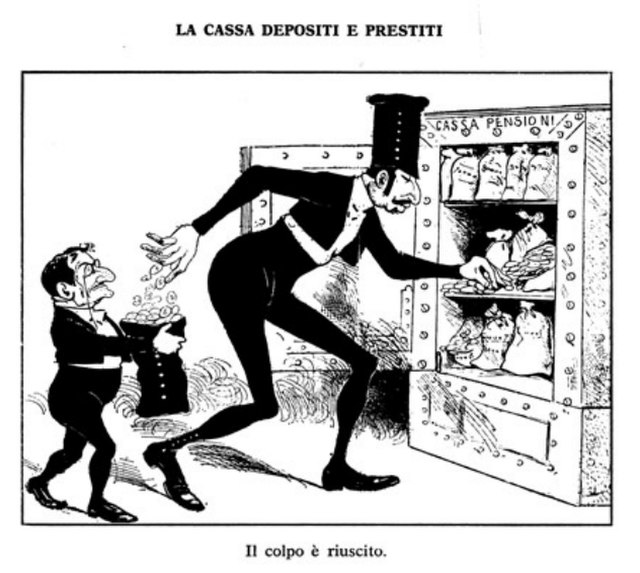The Banca Romana scandal surfaced in January 1893 in Italy over the bankruptcy of the Banca Romana, one of the six national banks authorised at the time to issue currency. The scandal was the first of many Italian corruption scandals, and discredited both ministers and parliamentarians, in particular those of the Historical Left and was comparable to the Panama Canal Scandal that was shaking France at the time, threatening the constitutional order. The crisis prompted a new banking law, tarnished the prestige of the Prime Ministers Francesco Crispi and Giovanni Giolitti and prompted the collapse of the latter's government in November 1893. The scandal led also to the creation of one central bank, the Bank of Italy.
Banca Romana scandal trial
Giovanni Giolitti
Cartoon in the satirical magazine L'Asino (The Donkey) in June 1893, with Giolitti (right) and Tanlongo (left). "Savings and loans: the coup succeeded." (L'Asino, June 11, 1893)
Sitting in the Chamber of Deputees on 23 November 1893 (Illustrazione italiana)
The Left group, later called Historical Left by historians to distinguish it from the left-wing groups of the 20th century, was a liberal and reformist parliamentary group in Italy during the second half of the 19th century. The members of the Left were also known as Democrats or Ministerials. The Left was the dominant political group in the Kingdom of Italy from the 1870s until its dissolution in the early 1910s.
Urbano Rattazzi
Agostino Depretis
Benedetto Cairoli
Francesco Crispi








